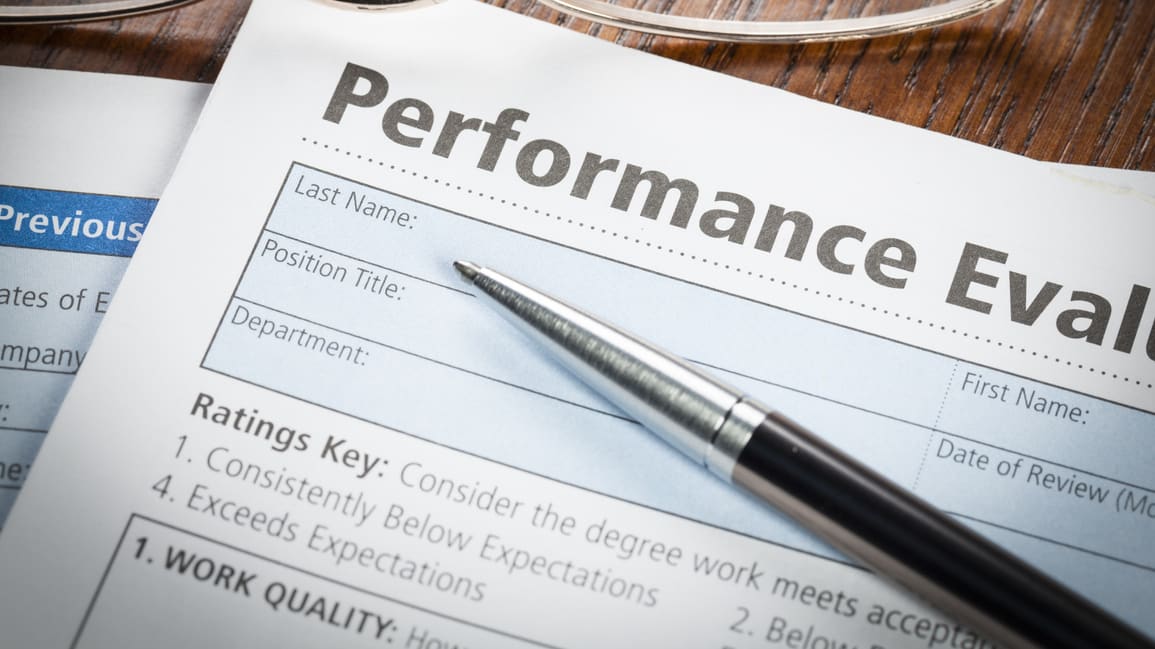Despite the fact that research shows annual reviews, for the most part, are not effective, most companies still use them. In fact, even though ongoing career discussions produce better results, approximately 87 percent of employees say they have an annual performance review.
So for those early-career employees who work for organizations that incorporate annual reviews into their talent management processes, it is important to be prepared. Below, I describe a typical performance review process and how you can put your best foot forward during this important conversation with your manager.
Before the Review
Step 1: Spend some time on your self-review.
You might think your manager already knows about your accomplishments from the year and that it's pointless to list them for him or her. But your manager isn't necessarily the only person who will see your self-review. He or she may share it with others, especially senior leaders.
In your self-review, detail four to six accomplishments you've had within the last six to 12 months.
For example, "I enhanced our employer brand by establishing a strong partnership with two universities, X University and Y University."
Also, it's important to acknowledge, in writing and by name, the individuals with whom you have collaborated. For example, "Our project team [list team members' names] improved the candidate tracking system, resulting in a decrease of seven days in the candidate's time to accept our offer."
Here's a template to help you write your self-review.
Step 2: Reach out to others with whom you have collaborated.
Ask if they are willing to speak with your manager and share some feedback about your performance. Alternatively, you can share a list of individuals with whom you have worked and ask your manager to reach out to them.
Finally, set a goal and determine what you want to get out of the performance review. Are you looking for developmental feedback? Do you want to ask for a raise? Are you interested in joining a new project team?
During the Review
Step 3: Determine how your work is evaluated.
When the annual performance review conversation begins, your manager should explain the performance review process, including the ratings scale. As an example, suppose you can receive 1 of 4 overall performance ratings. The ratings choices may include "Exceeding Expectations," "Meeting Expectations," "Below Expectations" and "Far Below Expectations." Your manager should explain each rating.
Next, your manager should explain whether the ratings are reflective and inclusive of the goals you achieved, the behaviors you demonstrated or both. Some organizations hyper-focus on the goals that employees achieve. Forward-thinking organizations evaluate specific goals (e.g., launched a new program) combined with competencies (e.g., collaborated with others).
Step 4: Share your self-review.
Be prepared to reflect on your performance. Share your self-review, identify your key accomplishments and discuss areas you'd like to develop.
Step 5: Listen to your manager's review of your performance.
Next, your manager will provide feedback related to your accomplishments, strengths and areas of development. Then, he or she will share your overall performance rating.
Step 6: Talk money (if applicable).
The final part of the performance review conversation might include discussion of a raise or bonus, as determined by your performance. Specifically, your manager should describe any compensation incentives related to the performance ratings.
Assuming your position is eligible for a bonus, here are some of the questions you should ask:
- When does the bonus payout take place?
- Are you eligible for the full bonus payout or will it be prorated contingent upon when you joined the organization?
- Is there a multiplier applied to the bonus? If so, how does the multiplier impact your bonus?
- How will the bonus payout be communicated? For example, will your manager or HR send an e-mail?
- Will the bonus payout come in one lump sum or is it paid over time? (Typically, organizations pay profit-sharing bonuses in one lump sum.)
- Will your bonus be taxed? If so, what is the tax rate that is used? (Note: Bonuses are typically taxed at a higher rate, as mandated by government regulations.)
- Is there more than one kind of bonus payout? For instance, in addition to the year-end bonus payout, some companies offer either spot bonuses for performance to encourage employees to remain with the organization or cash incentives for employee referrals.
After the Review
Step 7: Follow up with your manager.
After the performance review ends, you should send your manager an e-mail thanking him or her for the time and feedback. Also, you should initiate one-on-one follow-up meetings to discuss a development plan.
It's important to remember that performance reviews should not be a one-time conversation. Instead, start an ongoing discussion with your manager. Future topics could include your career interests, training opportunities, and participation in projects and tasks that will position you for promotional opportunities.
Kyra Sutton, Ph.D., is a faculty member at Rutgers University School of Management and Labor Relations in New Brunswick, N.J., where she teaches courses in training and development, as well as in staffing and managing the 21st century workforce. She also has served in lead HR roles at Pitney Bowes and Assurant.
An organization run by AI is not a futuristic concept. Such technology is already a part of many workplaces and will continue to shape the labor market and HR. Here's how employers and employees can successfully manage generative AI and other AI-powered systems.




